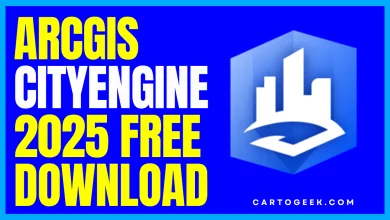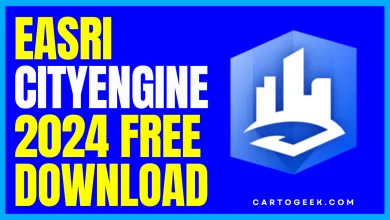
Download gvSIG 2.6: Free GIS Software for Windows, Linux, and macOS
Download gvSIG 2.6 to unlock the potential of geographic data. This free GIS software offers a user-friendly interface and advanced features for mapping, analysis, and visualization.
Contents
Introduction to Download gvSIG 2.6
For anyone in the field of Geographic Information Systems (GIS), whether a seasoned professional or an enthusiastic student, a high-functioning, affordable GIS tool can be invaluable. gvSIG 2.6, a free and open-source GIS software, fulfills these needs by offering extensive mapping, analysis, and visualization capabilities for a wide range of applications. Designed to provide a powerful alternative to expensive proprietary GIS tools, gvSIG 2.6 runs on Windows, Linux, and macOS, making it accessible and versatile.
In this article, we will dive into the functionality, key features, installation steps, and how gvSIG 2.6 can be applied across multiple domains. By the end, you’ll understand why gvSIG 2.6 stands out among free GIS solutions and how it can revolutionize your spatial analysis projects.
What is gvSIG 2.6?
gvSIG 2.6 is a robust, open-source GIS software developed by the gvSIG Association, a global organization dedicated to supporting open GIS solutions. With gvSIG 2.6, users gain access to tools that support spatial data analysis, map creation, and even advanced geospatial analytics, all without the need for costly licensing fees. Designed to cater to users from different backgrounds, it offers both beginner-friendly interfaces and sophisticated tools that can meet professional demands.
Unlike many GIS tools that require significant investment, gvSIG is entirely free. The software’s open-source nature promotes community-driven updates and continuous development, ensuring that users benefit from a highly customizable and cutting-edge GIS platform.
Why Choose gvSIG 2.6 for Your GIS Needs?
- Affordability: As a free and open-source tool, gvSIG 2.6 eliminates the financial barrier, making it accessible to students, researchers, professionals, and organizations with limited budgets.
- Cross-Platform Availability: gvSIG 2.6 is compatible with Windows, Linux, and macOS, providing flexibility and ease of use across various operating systems.
- Powerful Features: It includes comprehensive spatial analysis tools, cartographic capabilities, data format support, and plugin options for specialized functions.
- User and Community Support: With a dedicated community behind it, gvSIG benefits from a range of plugins, forums, and regular updates.
Key Features of gvSIG 2.6
gvSIG 2.6 comes packed with features that make it one of the most competitive free GIS options available:
- Advanced Spatial Analysis Tools
gvSIG 2.6 provides a suite of tools for manipulating and analyzing spatial data. From basic functions like layer creation to advanced spatial statistics, gvSIG makes data analysis accessible and detailed. This functionality is particularly useful for professionals in environmental sciences, urban planning, and resource management. - Comprehensive Data Support
gvSIG supports a wide variety of vector and raster data formats, including shapefiles, raster images, and common formats such as GeoTIFF, WFS, WMS, and KML. This broad compatibility allows users to work with data from various sources, eliminating compatibility issues and enabling seamless integration. - Scripting and Automation
gvSIG includes a scripting module that enables users to automate repetitive tasks, customize tools, and expand functionalities. Through Python scripting, users can save time, simplify complex workflows, and even contribute their scripts back to the community for others to use. - Map Design and Cartography
Creating maps is a breeze with gvSIG 2.6, thanks to its rich set of cartographic tools. Users can create visually appealing and professional-quality maps, add legends, customize layouts, and apply various symbology styles to layers. Whether you’re creating a simple map for a project or a detailed atlas, gvSIG provides the tools needed to design quality cartographic outputs. - 3D View and Analysis
gvSIG also includes a 3D viewing module, allowing for enhanced visualization of spatial data. This feature is useful for landscape modeling, terrain analysis, and any project that would benefit from 3D representation. The ability to switch between 2D and 3D views helps users gain a fuller understanding of spatial relationships within their data. - Plugin Support and Extensibility
gvSIG’s modular design supports an array of plugins that enhance its capabilities. Users can download plugins for specific tasks, such as remote sensing, network analysis, and LiDAR data processing. This extensibility ensures that gvSIG remains adaptable to various specialized needs. - Global Community and Continuous Development
As an open-source platform, gvSIG is continuously supported and updated by a global community of developers and users. This means regular updates, bug fixes, and improvements based on user feedback. The community also provides resources, tutorials, and forums where users can seek help, share insights, and stay updated on new developments.
Who Can Benefit from gvSIG 2.6?
gvSIG 2.6’s versatility makes it suitable for a wide range of users:
- GIS Professionals and Consultants: Get access to powerful tools needed for spatial analysis and data management without the cost.
- Academic Researchers and Students: gvSIG 2.6 is a budget-friendly solution for students and researchers working on GIS projects. Its open-source nature provides an opportunity to learn and customize a GIS tool.
- Government Agencies and NGOs: Ideal for organizations working with limited resources, gvSIG 2.6 provides all the necessary functionalities for urban planning, environmental management, and social projects.
- Educational Institutions: Universities and colleges can integrate gvSIG 2.6 into their curriculum as a hands-on learning tool for GIS courses, giving students real-world experience without added costs.
Real-World Applications of gvSIG 2.6
- Environmental Monitoring and Conservation
gvSIG 2.6 supports various tools for mapping and analyzing environmental data. Conservationists can use it to study habitats, track species distributions, or model environmental impacts, providing a reliable GIS solution for conservation projects. - Urban and Regional Planning
Urban planners use gvSIG to manage land use data, model urban growth, and plan infrastructure developments. Its advanced spatial analysis features can help in creating more efficient and sustainable cities. - Agricultural Management
gvSIG 2.6 allows farmers and agronomists to visualize and analyze agricultural data, including soil quality, crop distribution, and yield estimations. Its compatibility with remote sensing data is especially beneficial for large-scale agricultural projects. - Disaster Response and Management
gvSIG’s GIS capabilities can assist emergency response teams in planning evacuation routes, assessing disaster impacts, and managing response resources. Its multi-layer mapping makes it an excellent tool for crisis management and planning.
How to Download and Install gvSIG 2.6
- Visit the gvSIG Website:
Go to the official gvSIG website (gvSIG.org), and access the download section for the latest version. - Select Your Operating System:
Choose the download link that matches your operating system (Windows, Linux, or macOS). Each version is optimized for the specific OS, ensuring compatibility and performance. - Follow the Installation Instructions:
Once the download is complete, follow the installation prompts provided on the website. These guides cover system requirements, installation steps, and troubleshooting tips to make the process smooth. - Launch and Explore:
After installation, open gvSIG 2.6 and start exploring its functionalities. Users new to gvSIG can also find tutorials, forums, and documentation on the website to help them get started.
Comparison with Other GIS Software
gvSIG 2.6 stands out among other free and open-source GIS tools, but it’s helpful to understand where it fits in comparison to alternatives like QGIS and GRASS GIS.
- Cost: Like QGIS and GRASS, gvSIG is free, making it a cost-effective choice for users who require GIS software but lack the budget for premium solutions.
- User Interface: gvSIG offers a user-friendly and intuitive interface, which may appeal to beginners or those who prefer an easy learning curve.
- Customization and Extensibility: With a range of plugins and customization options, gvSIG competes closely with QGIS. However, gvSIG has a more streamlined focus, which might appeal to users looking for a straightforward GIS solution.
Conclusion
Whether you’re a student, researcher, GIS professional, or part of an organization that relies on geographic data, gvSIG 2.6 offers an accessible, feature-rich solution. With its compatibility across major operating systems, robust analysis tools, and zero cost, gvSIG 2.6 proves to be a competitive option in the GIS space. The power and flexibility of gvSIG 2.6 allow users to enhance their mapping, spatial analysis, and geospatial data visualization effortlessly.
Start exploring gvSIG 2.6 today and discover the possibilities that come with free, open-source GIS technology. With a strong community behind it, gvSIG 2.6 promises to evolve and adapt, ensuring that users always have a reliable and modern tool at their disposal.
Linux 64 bits
Read More







